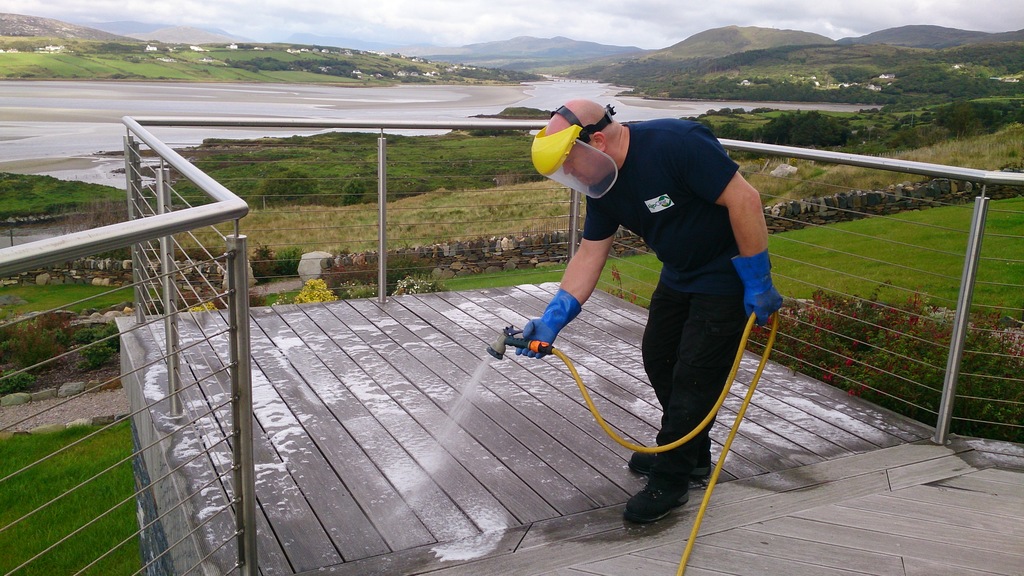
Keep it grey, natural decking
The maintenance of natural timber.
External wood surfaces are found around the house as decking, wall cladding fencing and often garden furniture
Their maintenance is always a preoccupation for the occupier : To coat or not to coat? We choose not to for the
following reasons :
Coatings do not last, especially the transparent ones damaged by penetrating UV rays. Unless the coating is
completely removed before each new application it’s opacity increases every time a coat is applied and the
aesthetics of timber gradually reduces to that of an uncertain brown. Oils are easier in that they eventually
breakdown and disappear from the surface.
The alternative is to keep the wood surface free from the disfiguring biofilm. It is simple, but some understanding
of the ageing process will help.
Wood is made of 3 main constituents. The cellulose represents approximately half the mass. It is organised as
short sharp needles woven in long stands. The needles have a binder to form a sophisticated composite
material with good mechanical properties : The lignin, a hard polymer resin accounting for a quarter of the wood
mass.
The remaining mass is a mix of hemicellulose, minerals and an array of polymers providing natural defences,
colour, smell etc.
When exposed, sawn timber will first loose the water soluble elements exposed to the rain. The other polymers,
including the lignin will become water soluble under the action of the light. This phase is observed by a change
of colour known as photo oxidation.
The combined action of light and rain will gradually expose the silver grey cellulose. As the saw cut through the
needle longitudinal arrangements at every wave in the grain, the unbound needle ends tend to rise under
surface desiccation feeling sharp and abrasive to the finger. Such a textured surface retains moistures and
becomes a natural host for an array of biological species : Bacteria, fungi, and algae. They feed on the substrate
and release metabolites preparing it for further faster feeding.
We can stop the bio colonisation by wetting timber with a biological wash. The discolouration recedes and the
natural grey of the cellulose remains stable. A quaternary ammonium is the biocide of choice for several
reasons :
· It does not alter the colour of the treated surface. Once applied the natural colour returns gradually as
the dead biofilm disperses.
· It is safe and accredited for amateur use. It does not bleach fabric.
· It is a natural timber preservative, sometimes used solely for this purpose. The active ingredient penetrates
below the surface preventing deeper colonization by fungi in particular.
· It is comparatively inexpensive, used anytime as and when required, without specialized equipment.
How is it used? Any practical way : Brush, deep pile roller, spray or simply a watering can. Just let it dry. If the
timber has been left to a stage where is becomes slimy, brushing becomes necessary. The active ingredient is
soapy and effective in removing the slime, grime and black dots.
In conclusion the maintenance of natural timber decking and cladding can be light and inexpensive. It does not
call for sophisticated products or processes, just a periodical wetting with a biocide ticking the right
environmental boxes.
The author is Managing Director of TVSP Ltd, a firm specialised in the commercialisation of a building cleaning process known as Algoclear Softwash. The company intervenes in UK and Ireland. Web : www.roofclean.co.uk.



